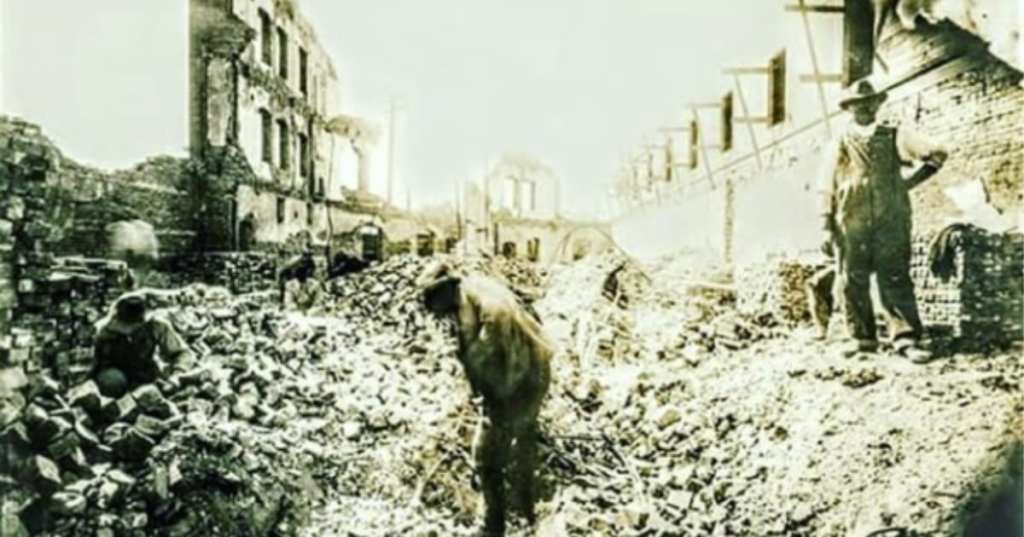Trending Now
One of the side effects of this strange and beautiful, but deeply flawed country is that so much history has been left out of the books most of us read during K-12.
For instance, until recently, there were far too many people who had never heard of, or never learned in depth about, the annihilation of Black Wall Street in Tulsa, Oklahoma.
The Black community in Tulsa had risen up from the ashes of slavery and amassed a certain amount of wealth…too much wealth for the white supremacists to tolerate. In an 18 hour period between May 31 and June 1, 1921, hundreds of people were killed by gunfire, bombs, and lynchings, leaving a mark on Black lives all across the country.
Since you may have only heard about it for the first time recently, here are 5 more facts you should know about those devastating two days.
5. We still don’t know exactly what struck the match that fateful night.
https://www.instagram.com/p/CA5ieq0DGpx/
Tulsa was affluent, but that didn’t mean that crime and racial tensions didn’t run high. White mobs went on tears of vigilante justice, lynching people suspected of crimes with little to no police interference.
On May 31, 1921. a Black teenager named Dick Rowland was arrested for an incident that happened the previous day. No one knows exactly what happened between him and a white woman named Sarah Page – it was either something as innocuous as him frightening her or stepping on her toe, or, on the other end of the spectrum, him trying to rape her.
An angry white mob showed up at the courthouse, demanding they sent Rowland out for his purported crimes.
4. Why is was known as “Black Wall Street”
https://www.instagram.com/p/CA3AzQNFRZQ/
Tulsa’s Greenwood neighborhood was home to most of Tulsa’s 10,000 Black residents, making it the second-largest Black community in Oklahoma.
It was also one of, if not the, wealthiest Black neighborhoods in the country, boasting a library branch, two newspapers, and the prosperous business district known as “Black Wall Street.”
3. Police likely encouraged the raging violence.
https://www.instagram.com/p/CA3EaIRjzfF/
The Tulsa police weren’t able to control the riot, but reports were that they didn’t even try – in fact, they may have done what they could to encourage it. Eyewitness accounts told of armed authorities deputizing white members of the mob and using racial slurs while egging the violence on.
The National Guard was called out to tame the situation, but mostly “protected” a white neighborhood while the Black neighborhood burned.
2. We don’t know exactly how many people died.
https://www.instagram.com/p/CBwn-IyAv2T/
The violence began when the police refused to release Rowland, and a group of armed Black men arrived at the courthouse to show their intention to protect him. Tensions rose, shots were fired, and the battle between white and black began.
The angry, white mob marched into Greenwood and looted homes, set them on fire, destroyed businesses, and attacked unarmed residents. More than 1200 houses and buildings, including a school, library, hospital, churches, and both newspapers, were lost.
Between 50-300 people were killed, making it one of the deadliest single incidents of racial violence in U.S. history.
1. There was a concentrated effort to erase the incident from history.
https://www.instagram.com/p/CA50wDWFVG2/
Like we said at the outset of this article, the Tulsa Race Massacre is still missing from many school curriculums and history books today. In the years that followed the incident, a concentrated effort to suppress the story began, starting with the Tulsa Tribune removing their front-page article accusing Dick Rowland of assault. Accounts of the incident were wiped from police and state militia archives, and it was never commemorated in any way.
76 years later, in 1997, the government finally formed an official Race Riot Commission to investigate the details, and in 2020, nearly 100 years later, Oklahoma school districts received lessons to include in their curriculums.
Education is key, and everyone’s history matters – it’s all American history, after all.
Did you learn something new today? What surprised you the most? Tell us in the comments!






